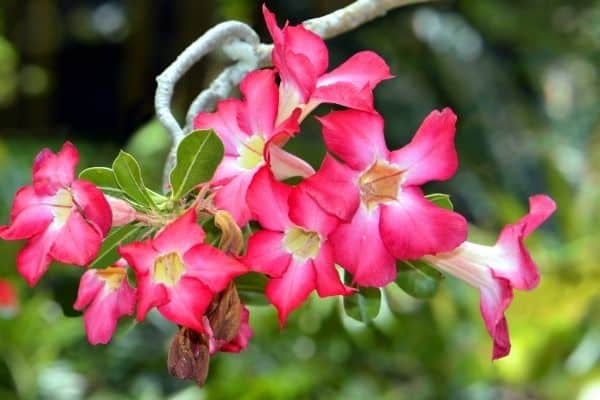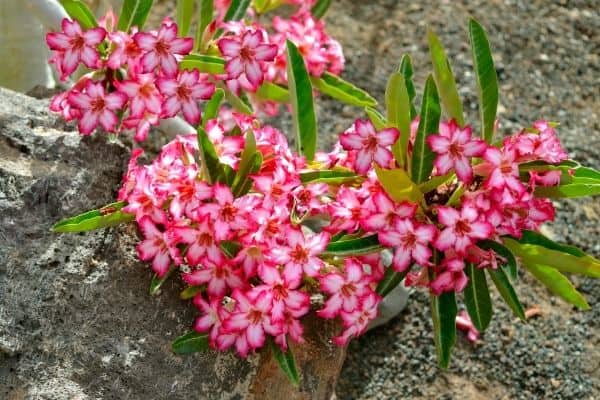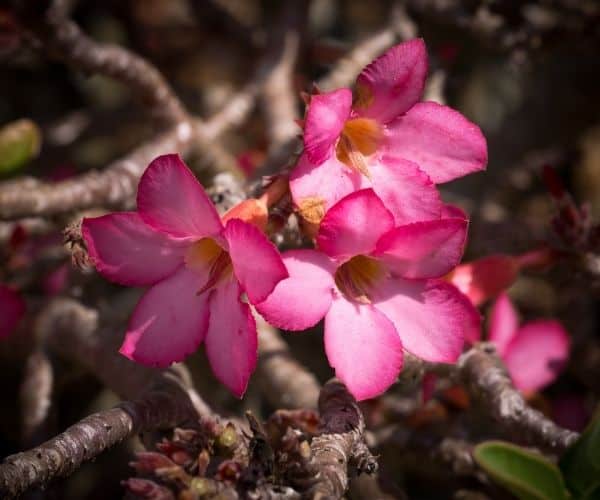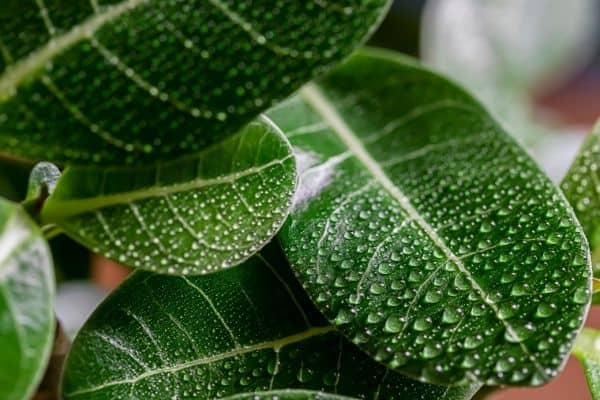Adenium Arabicum Care 101: 7 Tips for Success
The desert rose or elephant’s foot plant, scientifically known as Adenium arabicum, is a stunning indoor plant that will captivate your attention. These beautiful succulents have unique woody stems and bloom in eye-catching shades of red, pink, and coral. They are like living ornaments, adding a vibrant touch to any space.
Originating from Africa, Madagascar, and the Middle East, these sun-loving succulent shrubs thrive in arid, desert-like conditions with minimal water. Their glossy leaves, exquisite tubular flowers, and compact structure make them a popular choice for bonsai enthusiasts worldwide.

If you’re a gardening enthusiast, you’ll be delighted to know that Adenium arabicum is exceptionally easy to grow in both indoor and outdoor pots. With various varieties and numerous names, such as mock azalea, impala lily, dwarf bottle tree, and sabi star, this plant offers endless possibilities for adding beauty to your surroundings.
What’s more, caring for Adenium arabicum is a breeze. Its maintenance requirements are minimal, allowing you to enjoy its blossoming beauty for a long time without much effort.
Contents
Adenium Arabicum Care Guide
Taking care of the Adenium arabicum plant is simple but requires gentle handling. There are two key elements to keep in mind: regular watering and plenty of sunlight. This plant thrives in warmer temperatures and can be grown indoors in colder areas.
During the summer months, the Adenium arabicum plant blooms beautifully with vibrant green leaves and stunning red and pink flowers. In the winter, it becomes dormant and sheds its leaves and flowers. Now let’s explore in detail how to care for your Adenium arabicum plant.
Soil

Choosing the right soil is an important step in caring for an Adenium arabicum plant. This plant loves dry, desert-like environments. It thrives in warmer temperatures and well-draining soil, such as gravelly or sandy soil mixed with perlite. The ideal pH level for the soil is neutral to acidic, around 6.0. Adding gravel below and above the soil can prevent the plant from rotting.
Light
Adenium arabicum plants thrive in sunlight, so it’s important to place them in a sunny spot in your home, like a sunroom or windowsill. If you have an outdoor area, choose a spot with good sunlight and some protection from the harsh noon sun, which can harm the leaves.
Water
The water needs of the Adenium arabicum plant vary with the temperature and season. During the summer and late spring, when it’s growing, watering the plant stimulates growth and flowering. The soil should be moist but not saturated. Check the soil regularly and let it dry completely before watering again.
Ensure that the pot you use has drainage holes to prevent overwatering, as too much water can cause the plant to rot. In the winter and fall, when the plant is dormant, reduce watering to 1-2 times a month.
Temperature and Humidity
Adenium arabicum plants thrive in dry conditions and warmer temperatures. They cannot tolerate temperatures below 50°F for extended periods. The ideal temperature range for these plants is between 65°F and 90°F. If you’re growing them outdoors, make sure to protect them from frost or snow in the winter.

These plants don’t require high humidity, as they are adapted to hot and dry desert conditions.
Fertilizer
During the active growing season (summer and spring), it’s recommended to fertilize your Adenium arabicum plant once a month with a balanced fertilizer diluted in water. Phosphorus-rich fertilizers promote flower formation. Be careful not to over-fertilize, as it can cause leaf edges to turn brown. Leach the soil frequently with clean water to avoid salt buildup.
Avoid fertilizing the plant during the winter and fall when it’s dormant.
Pruning
Adenium arabicum plants generally don’t require much pruning unless you want to control their size and shape. Prune them before summer begins, allowing new growth to fill the plant during the growing season.
Pest and Disease Control
Pests

Keep an eye out for spider mite infestations, as they thrive in dry conditions. Mealybugs from nearby plants can also affect Adenium arabicum plants. Regularly check your plants for any signs of infestation, especially when transitioning them from warm, dry climates to indoors for the winter.
Stem Root Rot
Stem root rot is a common problem caused by a fungus. If you notice rot on any part of the stem, carefully cut off the affected portion, ensuring you reach the healthy tissue. The plant may form an abscission zone to stop the rot in desert conditions, but this is less likely in humid or cooler climates.
Leaf Disease

To treat leaf rot, simply remove the affected leaves and place the plant in a dry location to allow it to dry out. Avoid watering the leaves directly or watering in the evening. In desert or tropical climates, this may not be a concern as the leaves dry quickly.
Repotting the Adenium Arabicum Plant
You can repot the plant during the warm season if necessary. Ensure the soil is completely dry before gently removing the plant from its pot. Remove any old soil and trim any dead or rotted roots. Treat any cuts with an antibacterial solution or fungicide. Repot the plant in fresh potting soil, spreading the roots evenly. Allow the plant to dry for 1-2 weeks before watering lightly to prevent root rot.
With some water, the right temperature, and a little care, the stunning desert rose will bloom and flourish. Whether you place it on your deck, patio, windowsill, or indoors, this plant is sure to be a showstopper and a fantastic addition to your home.
